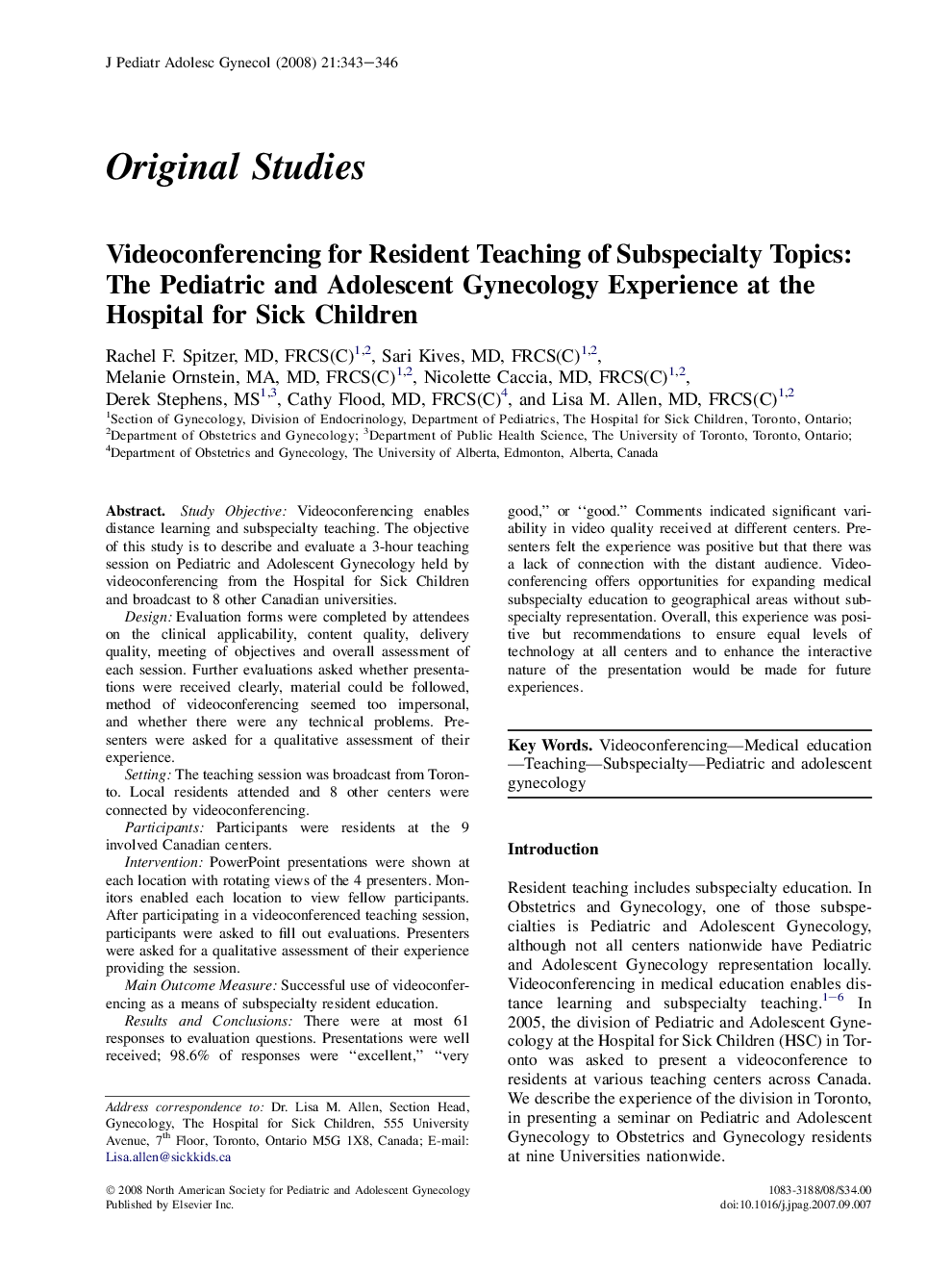| Article ID | Journal | Published Year | Pages | File Type |
|---|---|---|---|---|
| 3965413 | Journal of Pediatric and Adolescent Gynecology | 2008 | 4 Pages |
Study ObjectiveVideoconferencing enables distance learning and subspecialty teaching. The objective of this study is to describe and evaluate a 3-hour teaching session on Pediatric and Adolescent Gynecology held by videoconferencing from the Hospital for Sick Children and broadcast to 8 other Canadian universities.DesignEvaluation forms were completed by attendees on the clinical applicability, content quality, delivery quality, meeting of objectives and overall assessment of each session. Further evaluations asked whether presentations were received clearly, material could be followed, method of videoconferencing seemed too impersonal, and whether there were any technical problems. Presenters were asked for a qualitative assessment of their experience.SettingThe teaching session was broadcast from Toronto. Local residents attended and 8 other centers were connected by videoconferencing.ParticipantsParticipants were residents at the 9 involved Canadian centers.InterventionPowerPoint presentations were shown at each location with rotating views of the 4 presenters. Monitors enabled each location to view fellow participants. After participating in a videoconferenced teaching session, participants were asked to fill out evaluations. Presenters were asked for a qualitative assessment of their experience providing the session.Main Outcome MeasureSuccessful use of videoconferencing as a means of subspecialty resident education.Results and ConclusionsThere were at most 61 responses to evaluation questions. Presentations were well received; 98.6% of responses were “excellent,” “very good,” or “good.” Comments indicated significant variability in video quality received at different centers. Presenters felt the experience was positive but that there was a lack of connection with the distant audience. Videoconferencing offers opportunities for expanding medical subspecialty education to geographical areas without subspecialty representation. Overall, this experience was positive but recommendations to ensure equal levels of technology at all centers and to enhance the interactive nature of the presentation would be made for future experiences.
